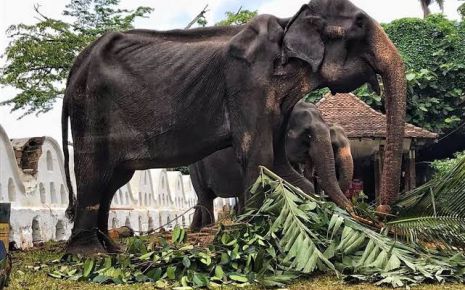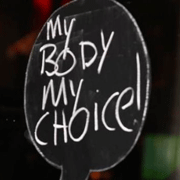The Interplay of COPTA Act 2003 and Trademarks Act 1999: A Comprehensive Analysis through the Lens of Pan Masala Advertisements
This legal article examines the intricate interplay between the provisions of
the Cigarettes and Other Tobacco Products (Prohibition of Advertising and
Regulation of Trade and Commerce, Production, Supply and Distribution) Act, 2003
(COPTA Act 2003) and the Trademarks Act, 1999. The focal point of the analysis
revolves around two appeals brought before the Hon'ble High Court of Delhi
concerning the trademarks DILBAGH PAN MASALA and VIMAL PAN MASALA. The central
question addressed is whether the advertisement of pan masala products, bearing
these trademarks, falls within the purview of the COPTA Act 2003 and its
associated rules.
Introduction:
The COPTA Act 2003 was enacted to regulate the advertising, production, supply, and distribution of tobacco products in order to curb the adverse health effects associated with tobacco consumption. The Trademarks Act, 1999, on the other hand, governs the registration and protection of trademarks in India. The collision between these two legislative frameworks arises in the context of pan masala advertisements, specifically those associated with DILBAGH PAN MASALA and VIMAL PAN MASALA.
Background of the Appeals:
The appellants, in both cases, issued notices to the respondents, contending that the advertisement of DILBAGH PAN MASALA and VIMAL PAN MASALA amounted to surrogate advertising, violating Section 5 of the COPTA Act 2003. In response, the respondents filed suits seeking interim injunctions against the appellants, which were granted by the Ld. ADJ. The appeals before the Hon'ble High Court of Delhi challenged these orders.
Court's Analysis and Findings:
The Hon'ble High Court of Delhi, in its analysis, rejected the appeals, asserting that Section 5(1) of the COPTA Act 2003 only applies to pan masala products containing tobacco as one of their ingredients. The court highlighted that the pan masala in question did not have tobacco as an ingredient, thereby falling outside the ambit of the COPTA Act 2003.
Trademark Classification and Applicability of COTP Rules:
The court also addressed the appellants' plea that Rule 2(a) of the Cigarettes and Other Tobacco Products (Prohibition of Advertisement or Regulation of Trade and Commerce, Production, Supply and Distribution) Rules, 2004 (COTP Rules) applied. This argument was dismissed, emphasizing that the respondents were not engaged in the manufacturing, marketing, or sale of tobacco, gutka, bidi, or zarda in any manner in the country.
Trademark Registration under Multiple Classes:
The court took note of the fact that although the brand names were registered under Class 34 (covering tobacco and tobacco products), they were also registered for various other products under Classes 29, 30, and 31 of the Trademarks Act, 1999. This diversity in trademark registrations further fortified the court's conclusion that the COPTA Act 2003 did not apply to the pan masala in question.
The concluding Note:
This case provides valuable insights into the nuanced interplay between the COPTA Act 2003 and the Trademarks Act 1999, specifically in the context of pan masala advertisements. The court's careful consideration of the ingredients, trademark classifications, and the absence of tobacco-related activities by the respondents sets a precedent for future disputes in this evolving legal landscape.
The Case Law Discussed:
Case Title: Directorate General of Health Services Vs Som Pan Product Pvt.Ltd.
Date of Judgement/Order:24.01.2024
Case No. FAO 84/2022
Neutral Citation: 2024:DHC:509
Name of Hon'ble Court: Delhi High Court
Name of Hon'ble Judge: Dharmesh Sharma, H.J.
Disclaimer:
Ideas, thoughts, views, information, discussions and interpretation expressed herein are being shared in the public Interest. Readers' discretion is advised as these are subject to my subjectivity and may contain human errors in perception, interpretation and presentation of the fact and issue involved herein.
Written By: Advocate Ajay Amitabh Suman, IP Adjutor - Patent and Trademark Attorney
Email: [email protected], Ph no: 9990389539
Introduction:
The COPTA Act 2003 was enacted to regulate the advertising, production, supply, and distribution of tobacco products in order to curb the adverse health effects associated with tobacco consumption. The Trademarks Act, 1999, on the other hand, governs the registration and protection of trademarks in India. The collision between these two legislative frameworks arises in the context of pan masala advertisements, specifically those associated with DILBAGH PAN MASALA and VIMAL PAN MASALA.
Background of the Appeals:
The appellants, in both cases, issued notices to the respondents, contending that the advertisement of DILBAGH PAN MASALA and VIMAL PAN MASALA amounted to surrogate advertising, violating Section 5 of the COPTA Act 2003. In response, the respondents filed suits seeking interim injunctions against the appellants, which were granted by the Ld. ADJ. The appeals before the Hon'ble High Court of Delhi challenged these orders.
Court's Analysis and Findings:
The Hon'ble High Court of Delhi, in its analysis, rejected the appeals, asserting that Section 5(1) of the COPTA Act 2003 only applies to pan masala products containing tobacco as one of their ingredients. The court highlighted that the pan masala in question did not have tobacco as an ingredient, thereby falling outside the ambit of the COPTA Act 2003.
Trademark Classification and Applicability of COTP Rules:
The court also addressed the appellants' plea that Rule 2(a) of the Cigarettes and Other Tobacco Products (Prohibition of Advertisement or Regulation of Trade and Commerce, Production, Supply and Distribution) Rules, 2004 (COTP Rules) applied. This argument was dismissed, emphasizing that the respondents were not engaged in the manufacturing, marketing, or sale of tobacco, gutka, bidi, or zarda in any manner in the country.
Trademark Registration under Multiple Classes:
The court took note of the fact that although the brand names were registered under Class 34 (covering tobacco and tobacco products), they were also registered for various other products under Classes 29, 30, and 31 of the Trademarks Act, 1999. This diversity in trademark registrations further fortified the court's conclusion that the COPTA Act 2003 did not apply to the pan masala in question.
The concluding Note:
This case provides valuable insights into the nuanced interplay between the COPTA Act 2003 and the Trademarks Act 1999, specifically in the context of pan masala advertisements. The court's careful consideration of the ingredients, trademark classifications, and the absence of tobacco-related activities by the respondents sets a precedent for future disputes in this evolving legal landscape.
The Case Law Discussed:
Case Title: Directorate General of Health Services Vs Som Pan Product Pvt.Ltd.
Date of Judgement/Order:24.01.2024
Case No. FAO 84/2022
Neutral Citation: 2024:DHC:509
Name of Hon'ble Court: Delhi High Court
Name of Hon'ble Judge: Dharmesh Sharma, H.J.
Disclaimer:
Ideas, thoughts, views, information, discussions and interpretation expressed herein are being shared in the public Interest. Readers' discretion is advised as these are subject to my subjectivity and may contain human errors in perception, interpretation and presentation of the fact and issue involved herein.
Written By: Advocate Ajay Amitabh Suman, IP Adjutor - Patent and Trademark Attorney
Email: [email protected], Ph no: 9990389539
Law Article in India
Legal Question & Answers
Lawyers in India - Search By City
LawArticles
How To File For Mutual Divorce In Delhi

How To File For Mutual Divorce In Delhi Mutual Consent Divorce is the Simplest Way to Obtain a D...
Increased Age For Girls Marriage

It is hoped that the Prohibition of Child Marriage (Amendment) Bill, 2021, which intends to inc...
Facade of Social Media

One may very easily get absorbed in the lives of others as one scrolls through a Facebook news ...
Section 482 CrPc - Quashing Of FIR: Guid...

The Inherent power under Section 482 in The Code Of Criminal Procedure, 1973 (37th Chapter of t...
The Uniform Civil Code (UCC) in India: A...

The Uniform Civil Code (UCC) is a concept that proposes the unification of personal laws across...
Role Of Artificial Intelligence In Legal...

Artificial intelligence (AI) is revolutionizing various sectors of the economy, and the legal i...








Please Drop Your Comments